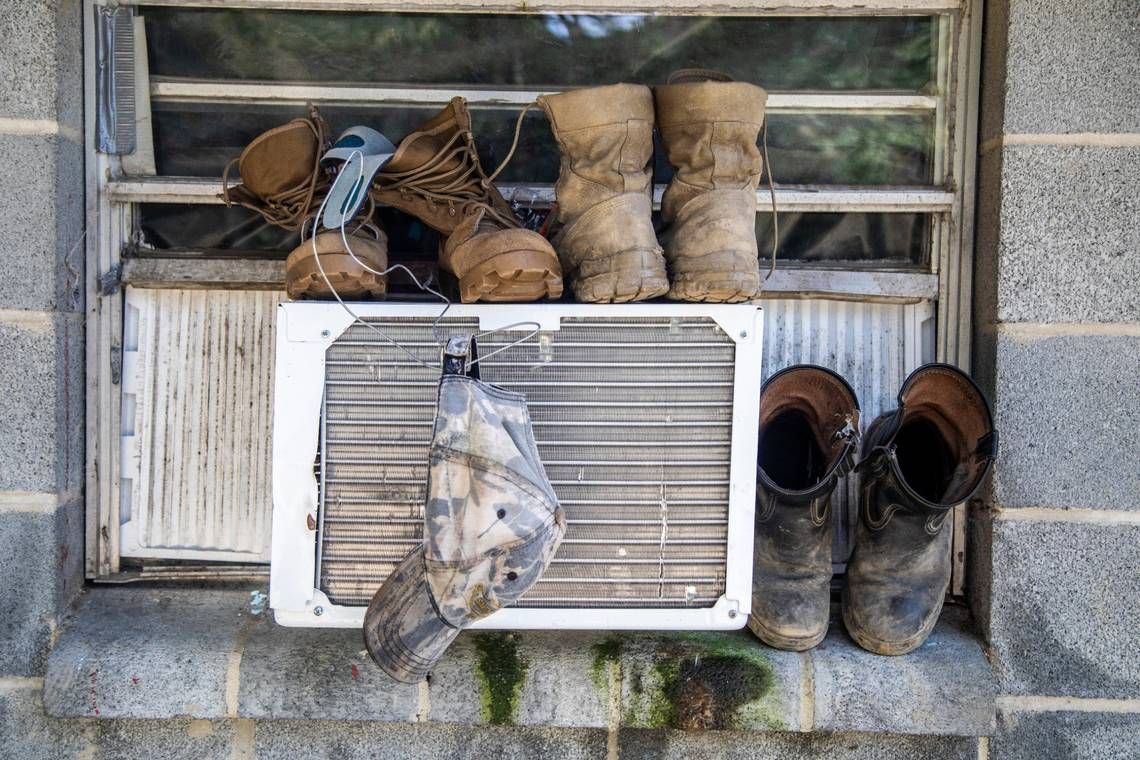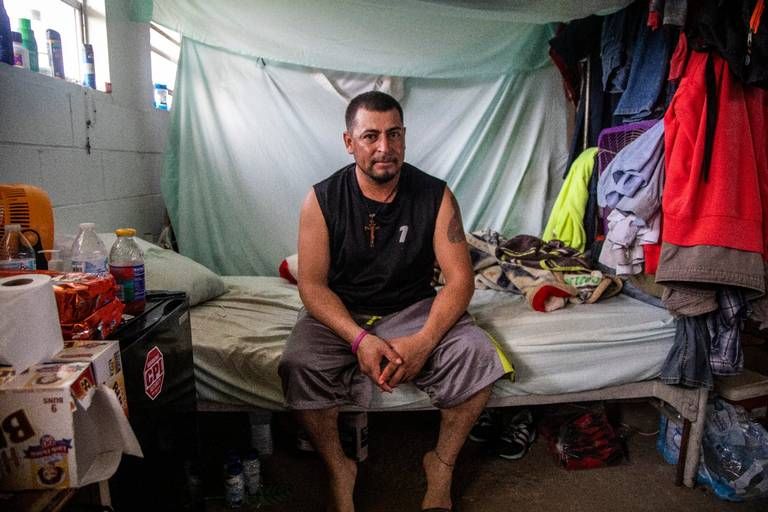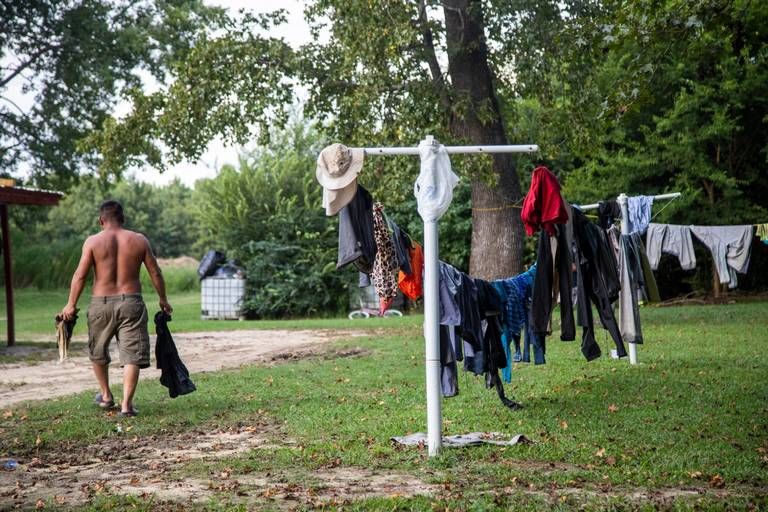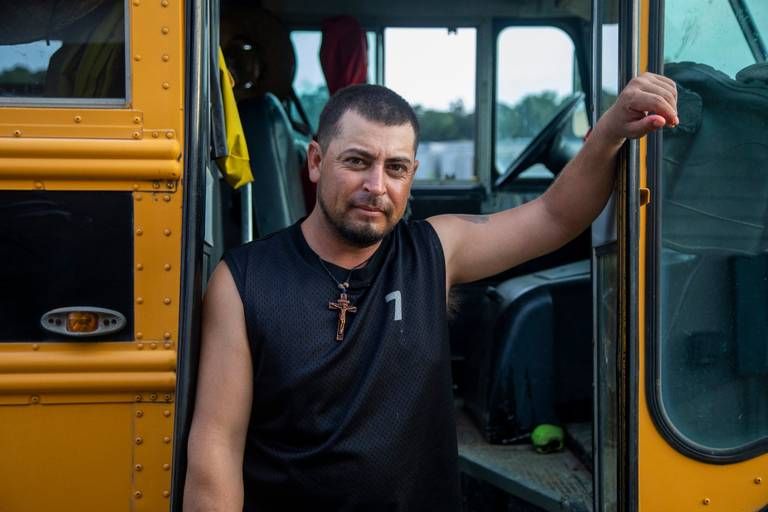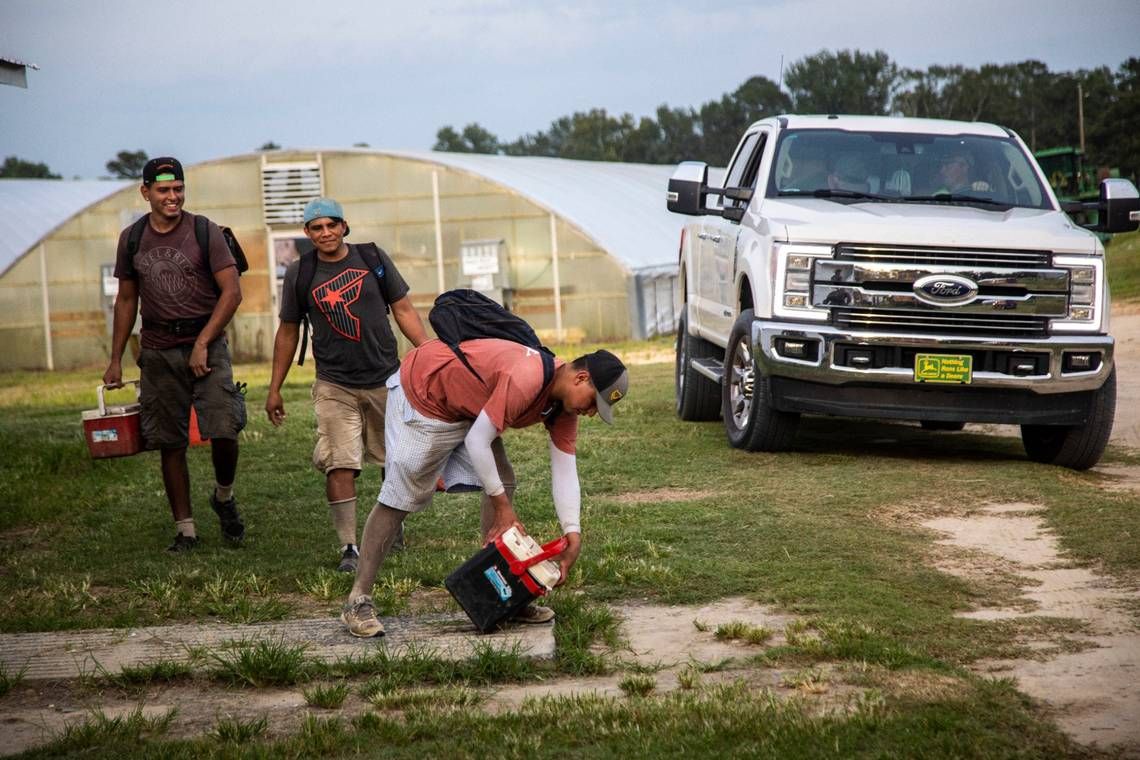In North and South Carolina, sea-level rise is most noticeable in counties along the coast, where beaches shrink, dunes disappear and homes crumble, but the effects of climate change reach well inland. “Beyond the Beach” is a seven-part series examining the health toll that climate change is already taking on the people who live and work in the Carolinas.
The project is a partnership of The News & Observer in Raleigh, North Carolina, The State in Columbia, South Carolina, Columbia Journalism School and the Center for Public Integrity. Funding support for “Beyond the Beach” came from the Pulitzer Center on Crisis Reporting. Columbia Journalism Investigations, an investigative reporting unit at the Columbia Journalism School, also contributed to the project. Funding for CJI comes from the school’s Investigative Reporting Resource and the Energy Foundation.
José and the other farmworkers who live in a grower-provided barracks at a Johnston County farm are used to going to bed late and waking up early.
It’s just too hot inside to do anything else.
“There’s no air conditioning in our housing, just intake fans,” José told The News & Observer in Spanish during an interview in August. “All the workers have to get their own fans and ventilators to cool ourselves off.
“We struggle to fall asleep at night because of, well, that damn heat,” he said. José and other farmworkers quoted in this series are only being identified by their first names to protect their employment.
Inside the long white building where José and about 20 other farmworkers stayed, there was one room for sleeping with beds lined up along the walls. Many workers had draped sheets around their beds for some privacy. At the foot of several beds, box fans had been propped up to provide some cool air.
It is common for North Carolina farmworkers to live in grower-provided housing, and it is common for that housing to lack air conditioning. Beyond making it hard to fall asleep, that can be a health risk, especially for agricultural workers.
When farmworkers come home at the end of the day, they immediately set about cooling off, changing clothes and finding water. When they cannot cool off, experts told The News & Observer, their bodies could be more susceptible to heat illness.
Climate is likely making workers’ recovery more difficult, too. Warmer nights are among the telltale signs of a warming planet, and the decade from 2008 to 2017 in North Carolina included more nights when the low temperature stayed above 75 degrees Fahrenheit than any other on record, according to the N.C. Climate Science Report.
Box fans and cracked windows often aren’t enough for workers to recover.
Less than half of the state’s farmworker housing has air conditioning, said Gayle Thomas, the medical director of the N.C. Department for Health and Human Services’ Farmworker Health Program. Most of the housing that does have air conditioning only has window units in the bedroom.
“I have not seen many farmworker camps that even have [window units]. Most of them I’ve seen just have big fans next to their beds, and they sleep with the fans on,” Thomas said. “So not only are they exposed to heat at work, but when they come home, they don’t have a place to recover.”
More Warm Nights Coming
It is alarming when scientists use words like “astounding.”
That’s what Kathie Dello, North Carolina’s state climatologist, calls a graph showing the progression of North Carolina’s average minimum temperature. After averaging 47.2 degrees Fahrenheit over the 20th Century, the annual minimum temperature has been above average since 2002.
And during the last five years, the average minimum temperature has hovered around 50 degrees Fahrenheit, reaching record highs each year.
That is, Dello said, almost entirely a consequence of nighttime temperatures failing to get as cool as they did for much of the 20th century. Nighttime temperatures are more sensitive to global warming because there is less air mass overnight, meaning the heat trapped by greenhouse gases has a more pronounced impact.
“We’re doing a crazy experiment to our planet and it’s just that much more sensitive [at night] because there’s less to get warmed so it can heat up more,” Dello said.
Making matters worse, the number of very warm nights is almost certain to dramatically increase over the rest of the century, according to experts.
Scientists working on the Climate Science Report looked at two warming scenarios: Under one, temperatures would increase by about 3.2 degrees Fahrenheit by the end of the century, while the other studied an increase of about 6.7 degrees.
Either way, the number of very warm nights in North Carolina’s Coastal Plain would spike. Under the 3.2 degree scenario, the increase would be between 14 to 45, while the 6.7 degree scenario would see 48 to 87 more very warm nights.
Dello said, “If you’re somebody who doesn’t have sufficient access to cooling or can’t afford to run an air conditioner the entire night, you might be physiologically stressed.”
No Regulations
There are no states that mandate cooling in farmworker housing. North Carolina’s Migrant Housing Act requires growers to provide heating if the outside temperature drops below 50 degrees Fahrenheit but does not address cooling.
In emailed responses to The News & Observer, Cherie Berry, the longtime N.C. labor secretary, argued that federal and state laws don’t require that homes have air conditioning.
“Until air conditioning is required of all private residences, I cannot see why we would burden farmers with a higher level of regulation than required of any other residence,” wrote Berry, who is retiring this year.
Thomas Arcury and Sara Quandt have studied the impacts of heat on farm workers for more than a decade. The husband-wife team works out of Wake Forest University’s Center for Worker Health.
Migrant farmworkers who are in North Carolina for the growing season on an H-2A visa have their housing provided by growers, Arcury said. That means that even if workers want air conditioning, it is virtually impossible to justify the investment.
“If you own your own house, you can air condition it. If you can rent a house, you can air condition it,” Arcury said in an interview. “If you are in employer-provided housing then it’s difficult to do such a thing, particularly if you are only there for a few months a year and you don’t know if you are going back to that place.”
Conditions in Farmworker Housing
During an interview with The News & Observer, Arcury recalled one research trip to farmworker housing next to a cantaloupe field. He initially tried to take measurements outside, but small bugs soon drove him indoors to a space without air conditioning.
After three or four hours doing interviews and collecting data inside the house, Arcury said, “I was soaking wet from perspiration from head to toe. My jeans were soaking wet. My shirt was soaking wet. … If you have to sleep in those conditions, you’re not going to recover from a day’s work.”
For one study, Quandt and Arcury visited 170 farmworker camps in North Carolina during the summer of 2010, with all visits coming after 4 p.m. They found that 55 percent of the workers they spoke with had no air conditioning at all, and 38.3 percent had window-mounted air conditioning units that are typically used to cool one room at a time. Only 6.6 percent had central air in their dwelling. Nearly 80 percent of workers had fans in their sleeping quarters.
The research team also measured the heat index inside the housing, or what the temperature actually feels like when the humidity is combined with the temperature. Heat indexes above 90 degrees Fahrenheit were common in sleeping quarters during summer months, they found.
“They’re working all day in the heat, in the high humidity, doing strenuous labor which only compounds the heat. Then, if they get home and they’re in a situation in which the inside of their dwelling is in the 80- or 90-degree Fahrenheit range, then they can’t recover,” Arcury said.
From mid-June to mid-July, 47.7% of the sleeping rooms measured reached 90 degrees, the heat index at which the National Weather Service urges extreme caution. That dipped slightly to 40.4 percent of rooms measured from the middle of July through the end of August before dropping to 11 percent in rooms measured from September through early October.
“This study suggests that farmworkers’ recovery from the heat stress experienced during daily work will be affected by the [heat index] experienced at night. The [heat index] in sleeping rooms decreases later in the season, but dangerous levels still occur into the late summer,” Quandt wrote.
In another study, Arcury interviewed 101 farmworkers about heat illness. He found that 35.6 percent of the workers reported experiencing at least one heat illness symptom while working outside, while 13.9 percent reported experiencing a symptom while working inside. The most common symptoms were hot, dry skin and dizziness.
Arcury also tried to figure out what might be causing heat illness. Personal characteristics like age or being a smoker were not associated with heat illness while working outdoors, he wrote. But working in wet clothes, harvesting and cutting the top of tobacco plants off were.
He also found that 66.7 percent of the workers who had gotten heat illness while working outside had spent time in an extremely hot house after work. Arcury called this “an important association” and wrote, “This result argues for changes in the [federal] Migrant and Seasonal Agricultural Worker Protection Act requiring that farmworkers be provided cooled living spaces.”
“I’d honestly really like to have air conditioning here in our housing,” said José, the Johnston County farmworker.
Instead, most workers have bought fans, like José has, and set them around their sleeping areas. When they need to cool off, the workers find reasons to go outside, like talking on the phone or doing a load of laundry.
It’s the night time that’s the worst, though. Once the workers eventually fall asleep, they wake up tired, José said.
“At times you don’t want to go to work because you don’t sleep because of the heat. But we have to keep at it.”
This story is part of the Pulitzer Center’s nationwide Connected Coastlines reporting initiative. For more information, go to pulitzercenter.org/connected-coastlines.
This reporting was also financially supported by Report for America/GroundTruth Project, The North Carolina Local News Lab Fund of the North Carolina Community Foundation, Dogwood Health Trust, Solutions Journalism Network and more than 700 individual contributions. The News & Observer maintains full editorial control of the work. To support the future of this reporting, subscribe or donate.
